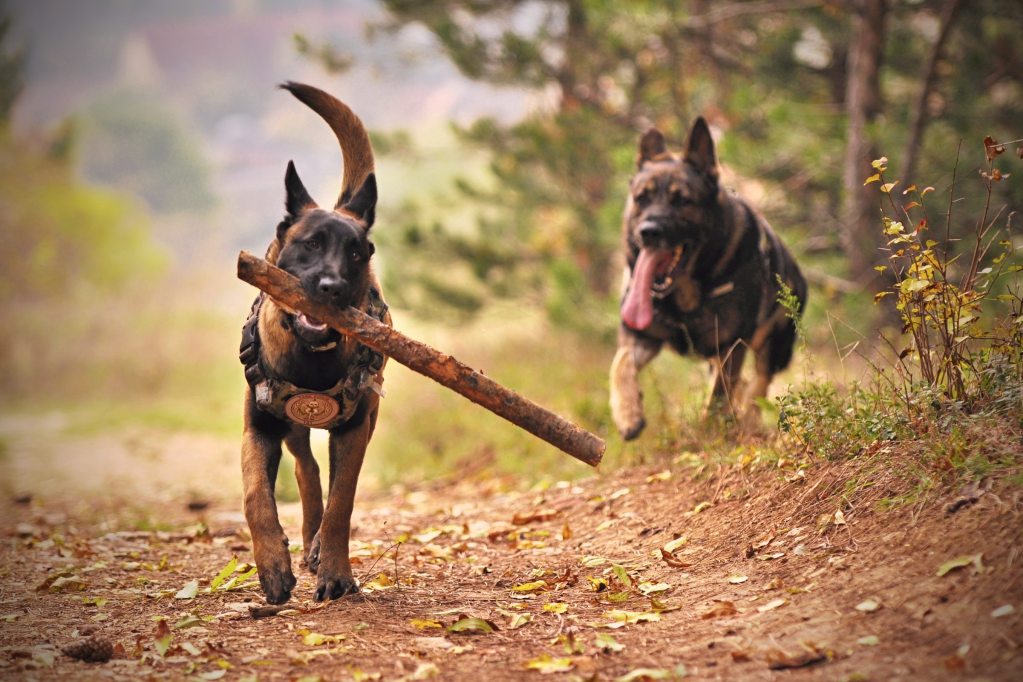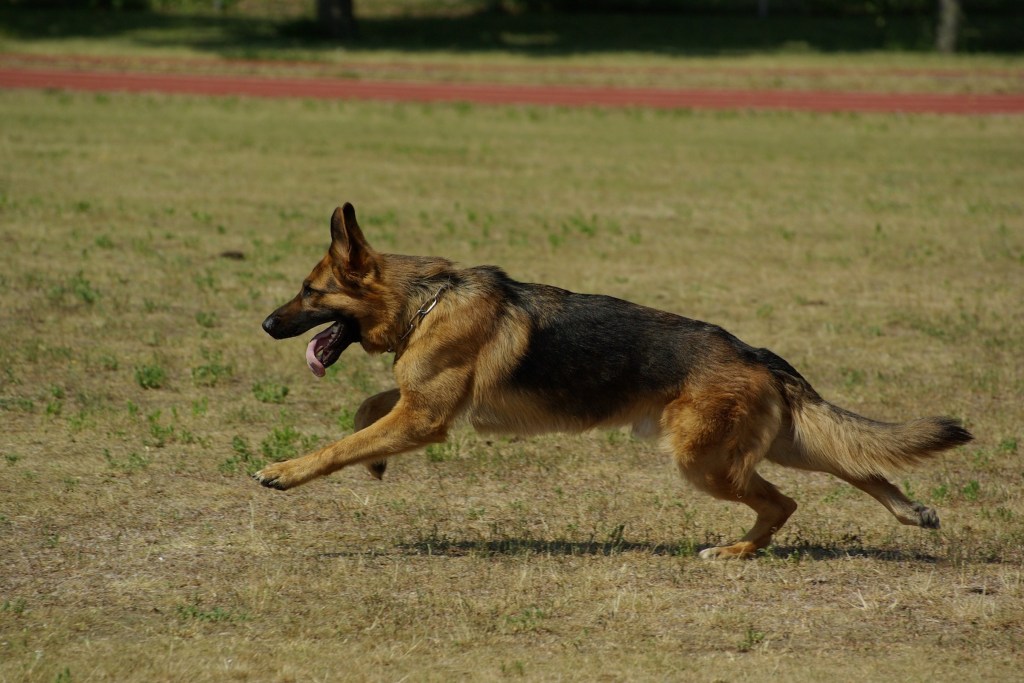Smart, loyal, and incredibly athletic — these are the defining traits of German shepherds — America’s third-most-popular dog breed in 2020. Exercising your German shepherd might seem straightforward at first glance, but many owners end up struggling to meet this breed’s high demand for activity. It’s not always clear when a pup needs some extra exercise, but keeping an eye out for the right behaviors will give you a better idea of whether you need to make any changes.
What kind of exercise is best for a German shepherd? How much exercise does a German shepherd need? These are the kinds of questions we’ll answer, so keep reading to find out exactly what you need to know to keep your buddy happy and healthy.

How much exercise does a German shepherd need every day? Remember, this is just an average!
Although exercise needs vary from dog to dog, German shepherds are an athletic, high-energy breed that needs several hours of activity per day. Generally speaking, your dog will want to play and run off energy multiple times a day, so you can’t count on one long walk being enough.
Keep in mind that your German shepherd needs both physical and mental stimulation to stay happy and healthy. Their breed history makes them perfect for herding or working on the farm — hence the name “shepherd” — but not so perfect for lounging around. They’ll need a task to do for at least part of the day to satisfy their driven minds, or they’ll make one for themselves. If their plan includes your sofa or a favorite pair of shoes, you won’t be so happy.
The American Kennel Club lists problem-solving, decision-making, and focused attention as great ways to keep your dog’s mind active. Puzzle toys can be a helpful tool, though more energetic pups may prefer something like agility challenges. The idea is to give him a task that helps him feel satisfied and accomplished when he finally achieves it — sometimes just a good run together can do the trick.

4 warning signs that your German shepherd isn’t getting enough exercise every day
Without the ability to use words, your German shepherd can’t exactly tell you when he needs more activity in his life. That’s why it’s up to you to watch for any signs that your dog might need to get out more. These are some of the most common symptoms of a sedentary lifestyle:
1. Destructive behavior
Coming home to a room full of torn-up papers and other destruction is understandably frustrating, but it might also be a cause for concern. If chaotic behaviors seem to increase, especially suddenly, your pup might be redirecting the excess energy that would otherwise be released through exercise, work, or play.
As unhelpful as this behavior may be, understand that your pet isn’t trying to upset you. He’s simply trying to relieve his boredom with whatever he has — which unfortunately happens to be your possessions.
2. Excessive barking
Barking is another way dogs release energy, whether they’re acting out of vigilance or just asking for attention. Since vocalization is a normal part of many working dogs’ tasks, whether it be herding or hunting, so it’s not unheard of for these behaviors to make their way into a dog’s everyday life. In fact, a bored shepherd may even try to herd you!
Dogs also bark when looking for a reaction from someone in their environment. They may do this when bored, restless, or trying to communicate. It could simply be one way of expressing hyperactivity — in the same ways restless people tap their foot or pace — or it could be your furry friend trying to initiate petting or play.
3. Weight gain
One visible sign of a dog’s lack of exercise is their weight. As cute as a chubby pup might be, carrying extra pounds definitely is not healthy for them. These are just a few of the health problems that can come hand in hand with weight gain, according to the American Kennel Club:
- Diabetes
- Heart problems
- Bone and joint issues, including arthritis
- Increased cancer risk
- High blood pressure
- Mobility difficulty
- Respiratory problems
It’s not always the most noticeable, though, if your pup gains pounds slowly, so this is just one more reason to keep up with your routine vet visits. Remember, “healthy” looks a bit different on every dog!
4. Lethargy and depression
If your German shepherd hasn’t been himself, he may need more exercise. Poor physical health can be a precursor to mental problems like depression, which leaves a pup unmotivated, unhappy, and sometimes unwilling to exercise. You’ll probably notice a change in activity levels and daily routines, such as sleeping or eating. He may lose interest in playtime and his other favorite things, or he may even act lethargic and sleepy. Of course, you might want to take them to a vet to eliminate the possibility of illness or injury.

How to exercise your German shepherd so they get enough activity
For a few dogs, one or two daily walks will satisfy their need for activity, but most German shepherds will not fall into this category. They’ll appreciate having tasks to complete as well as the chance to release energy through physicality, whether it be running, hiking, playing with other dogs, or even agility drills.
Some of these activities check off both physical and mental needs, but your dog will appreciate having a variety of activities as well. Even training can be fun and confidence-building for your dog — so, what are you waiting for?
If you feel like your dog is letting you know it’s time to get outside, go ahead and get creative with your activity time. There’s so much to do and explore together, and with the right mental stimulation, your dog won’t even feel like he’s exercising!
Editors' Recommendations
- Why does my dog have a bald patch on their tail? Here are the answers you need
- Does your pet need to visit the dentist? Here’s how a dog teeth cleaning works
- Top dog supplements for joint health and how they help your pooch stay active
- Ranked: These pet apps actually work (and pet parents love them)
- Viral video of a deaf dog that thinks she’s barking is the cutest thing ever




